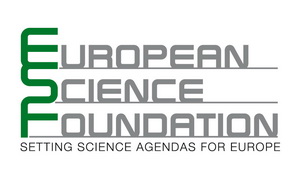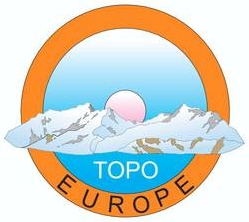
Prof. P.J. Tackley & Prof. T. Gerya, ETH Zürich,
collaborator Prof. J.-P. Burg, ETH Zürich
The aim of the project is to understand the influence of mantle currents on the evolution of topography driven by slab-slab and slab-asthenosphere interaction. This will be investigated using generic multiple-scale 4D (three spatial dimensions + time) petrological-thermomechanical numerical modelling of principal subduction-related geodynamic settings (subduction, collision, slab retreat and detachment, and intraplate uplift) involved in the geodynamic development of the European topography in the past and present, as well as global convection models. This IP will provide the other members of the research team with detailed 4-D geodynamic scenarios in which surface topography evolution and lateral movements is related to the evolution of synthetic Vp and Vs structure as well as other geophysical fields such as mantle mineralogy, temperature, stress, and deformation rate. In combination with the complementary results of analogue experiments (IP 4) the deciphered evolutionary relationships will be used for quantitative interpretation of observations on topography and deep Earth structure in European-Mediterranean region (IPs 2,3,4,5) and developing detailed geodynamic numerical model for the Western- and Central- Mediterranean region for the past 40-50 Myr (IP 6).
This will help to answer question such as: How strong is the effect of large-scale mantle currents on subduction dynamics? How is the evolution of mantle currents affected by the presence of chemically and rheologically distinct continents? Why are continents and Europe in particular uplifted? Why do orogens vertically and laterally grow at different rates? What determines the variable subsidence rates in foredeep basins and rifting areas? Can a global lithospheric mean flow arise through the interaction of plates and continents with convection, and if so, what is its effect on subduction zones and topographic evolution?
Ph.D. Thibault Duretz
Regional models are performed to investigate the interactions of mantle currents with subduction zones in different geodynamic settings (subduction,collision, slab retreat and detachment). These models will include realistic visco-elasto-plastic rheology, a free erosion-sedimentation surface, thermodynamically-calculated phase transitions and water transport above slabs. These results will be applied to specific key regions in Europe, including the Alps-Carpathian-Dinarides-Apennines (IP-4). Results of numerical modelling of seismic velocities will also be compared with seismic tomography data allowing numerical models to be strongly constrained both from topographic and seismic data (IPs 2,3,4).
I2ELVIS (Gerya and Yuen, 2003, 2007; Buiter et al., 2005) and I3VIS - original 2D and 3D computer codes written in C for thermomechanical modeling of tectonic and linked surface processes and P-T-deformation-time paths of rocks. The codes are designed for viscoelastoplastic T-P-strain rate-bulk strain dependent rheology, and account for changes in topography due to erosion and sedimentation processes and for changes in the physical properties of rocks due to phase transformations (via the Gibbs energy minimization approach, Connolly 2005). The numerical method is particle-in-cell: a conservative finite difference, primitive variable formulation on a non-deforming fully staggered irregular grid for the velocity-pressure solution, with Lagrangian markers used for advected quantities (T, C, stress etc.). A direct solver is used in 2D, but multigrid in 3D. The codes run on workstations and shared-memory supercomputers. Results from I2ELVIS and I3VIS are illustrated in Figures 1 and 2.
Ph.D. Fabio Crameri
The general relationship between continental topography, plate tectonics and mantle dynamics will be studied using global 3D spherical time-dependent models of free convection with realistic P-T-stress-dependent visco-plastic rheology that allows spontaneous plate generation and gives a low-viscosity asthenosphere. These will extend previous models from the group by including compositionally- and rheologically-distinct continents. Analysis will focus on the evolution of topography on continents as a function of their tectonic evolution (breakup, collision/aggregation, interaction with subduction), the correlation (or otherwise) between mantle flow at different depths (e.g. asthenosphere, transition zone, lower mantle) and plate directions, and the possibility of mean lithospheric motion wrt. to the mantle,. These results will help to put in context the detailed reconstructions of the other IPs (particularly IP-1) by giving an understanding of how the plate-mantle system behaves and influences topography on long (billions of years) timescales.
STAG3D. An original numerical 3D computer code (e.g., Tackley, 2000) that solves the equations of highly viscous flow in three dimensional spherical-shell or cartesian geometry using a finite difference / finite volume technique on a staggered grid. The solver can deal with strong viscosity variations over small distances, where viscosity can be an arbitrary function of temperature, depth, strain rate etc. A compositional field, phase changes and partial melting are incorporated into the model. The code runs on almost any computer including distributed memory (MPI) parallel computers and workstations. ETH has a linux cluster GONZALES partly owned by our group, with 296 dual opteron nodes (592 CPUs), 768 Gb total memory, and fast (quadrics) interconnect. An example result of a combined mantle-lithosphere calculation with self-consistent plates is in Figure 3. A self-consistent thermodynamic approach is incorporated into both codes, using the code PERPLEX (by Dr. J. Connolly at ETH). A Gibbs free energy minimization code for calculation in situ thermomechanical and seismic properties of rocks. Output is adopted for the numerical codes I2ELVIS, I3VIS and STAG3D.
References cited
Buiter, S.J.H., Babeyko, A.Yu., Ellis, S., Gerya, T.V., Kaus, B.J.P., Kellner, A., Schreurs, G., Yamada, Y. 2006, The numerical sandbox: Comparison of model results for a shortening and an extension experiment. In: Buiter, S. J. H. & Schreurs, G. (eds) 2006. Analogue and Numerical Modelling of Crustal-Scale Processes.Geological Society, London, Special Publications, 253, 29–64.
Connolly, J.A.D., Computation of phase equilibria by linear programming: a tool for geodynamic modeling and an application to subduction zone decarbonation. Earth Planet. Sci. Lett., 2005. 236: p. 524-541.
Gerya, T.V., Yuen, D.A., 2003, Characteristics-based marker-in-cell method with conservative finite-differences schemes for modeling geological flows with strongly variable transport properties. Phys. Earth Planet. Interiors, 140, 295-320.
Gerya, T.V., and Yuen, D.A., 2007, Robust characteristics method for modeling multiphase visco-elasto-plastic thermo-mechanical problems: Physics of the Earth and Planetary Interiors, 163, 83-105.
Tackley, P.J., 2000, Self-consistent generation of tectonic plates in time-dependent, three-dimensional mantle convection simulations Part 1: Pseudo-plastic yielding. Geochem., Geophys., Geosys, Volume 1: Paper number 2000GC000036.
.
.



addresses the 4-D topographic evolution of the orogens and intra-plate regions of Europe through a multidisciplinary approach linking geology, geophysics, geodesy and geotechnology. TOPO-EUROPE integrates monitoring, imaging, reconstruction and modelling of the interplay between processes controlling continental topography and related natural hazards. -->
The impact of mantle processes on surface deformation is perhaps conceptually well understood but largely lacks thorough quantification. As a result, it is in many cases impossible to discriminate between mantle-induced and surface-induced contributions to surface deformation. Valuable observations of vertical surface motions can often not be equivocally interpreted unless basic assumptions, such as isostasy, are being invoked. Any progress in understanding present-day topography and topography evolution, and progress in making correct interpretations of valuable surface observables requires quantification of real-Earth mantle dynamics and of the surface response. The European-Mediterranean region is a well-studied natural laboratory for which this progress can now be made and this is what our CRP aims at. -->